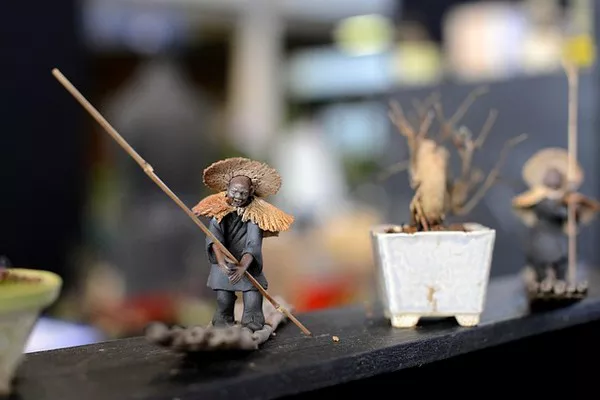Bonsai, an ancient art form that originated in China and evolved in Japan, captures the essence of nature in a tiny living masterpiece. While single bonsai trees are enchanting, a bonsai forest takes the art to a whole new level by emulating a miniature landscape of trees, rocks, and moss. In this comprehensive guide, we will delve into the captivating world of bonsai forests, offering expert insights, practical tips, and step-by-step instructions to create your own natural masterpiece. So, let’s embark on this horticultural journey and discover the art of crafting a breathtaking bonsai forest.
Understanding the Essence of a Bonsai Forest
A bonsai forest is a harmonious arrangement of multiple bonsai trees, rocks, and ground covers that imitate the beauty and serenity of a forest in nature. Each tree in the forest contributes to the overall composition, creating a dynamic and balanced display. The art of crafting a bonsai forest allows you to express your creativity and appreciation for the beauty of nature in a confined yet captivating space.
Selecting the Right Trees for Your Bonsai Forest
Choosing the right trees for your bonsai forest is a fundamental step in its creation. Consider native trees or species that are well-suited to the climate and growing conditions in your area. Deciduous and evergreen trees can be combined to create a diverse and visually appealing forest. Popular choices include pine, juniper, maple, oak, and spruce trees. Ensure that the trees you select have similar sunlight and watering requirements for easy maintenance.
When selecting young trees for your bonsai forest, look for healthy, well-proportioned specimens with well-developed trunks. Opt for trees with a variety of heights and shapes to create a natural and dynamic forest landscape.
Choosing the Right Container and Soil
Selecting the appropriate container is crucial for the success of your bonsai forest. Choose a shallow and wide container with drainage holes to allow excess water to escape. A rectangular or oval-shaped container is commonly used for bonsai forests, as it provides ample space to accommodate multiple trees.
Selecting the right soil mix is equally important. A well-draining bonsai soil mix is essential to prevent root rot and promote healthy growth. A typical bonsai soil mix consists of akadama, pumice, and lava rock in varying proportions, depending on the tree species and your local climate.
Arranging Trees and Rocks in Your Bonsai Forest
Creating a harmonious arrangement of trees and rocks is the heart of crafting a bonsai forest. Begin by placing larger rocks and stones in the container to form the foundation of the landscape. These rocks will anchor the trees and set the stage for the forest’s layout.
Next, carefully position your selected bonsai trees in the container. Arrange them in a way that mimics the growth patterns of a natural forest. Use varying heights and different species to create a sense of depth and diversity in your forest. Avoid placing trees in perfect straight lines; instead, embrace organic and irregular patterns to evoke a more natural and captivating appearance.
Nurturing and Caring for Your Bonsai Forest
Proper care and maintenance are vital to ensure the health and longevity of your bonsai forest. Regular watering is crucial, and the frequency will vary based on the tree species, soil, and environmental conditions. Use a gentle watering can or mister to prevent soil disturbance and maintain the aesthetics of your forest.
Fertilizing your bonsai forest is essential to provide the necessary nutrients for healthy growth. Choose a balanced, slow-release fertilizer, and apply it during the growing season to promote vigorous foliage and root development.
Pruning and shaping your trees is an ongoing process in bonsai cultivation. Regularly trim new growth and shape the branches to maintain the desired aesthetic form. Remove any dead, weak, or unwanted branches to improve the overall appearance and health of your bonsai forest.
Adding Ground Covers and Accents
Enhance the realism and visual appeal of your bonsai forest by adding ground covers and accent elements. Moss, small stones, or miniature figurines can be strategically placed to create a more immersive and natural setting. Moss, in particular, adds a touch of lushness and tranquility, evoking the ambiance of a forest floor.
The use of ground covers also helps to retain soil moisture and protect the roots of your bonsai trees, contributing to their overall health and vitality.
Conclusion:
Crafting a bonsai forest is a labor of love and creativity, but the rewards are boundless. Through meticulous selection, arrangement, and care, you can transform a collection of young trees into a breathtaking natural landscape that captivates the eye and nourishes the soul.
By understanding the essence of a bonsai forest, selecting the right trees and container, arranging them harmoniously, and nurturing their growth, you will create a living work of art that celebrates the beauty and serenity of nature.
Remember that the journey of cultivating a bonsai forest is as fulfilling as the end result. Embrace the process, learn from your experiences, and let your creativity flourish as you embark on this horticultural adventure. With patience, dedication, and a deep appreciation for nature’s beauty, your bonsai forest will become a cherished masterpiece, delighting generations to come.


